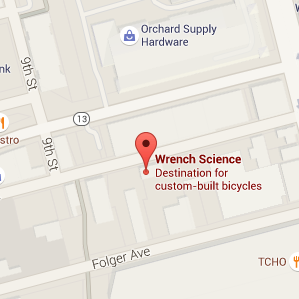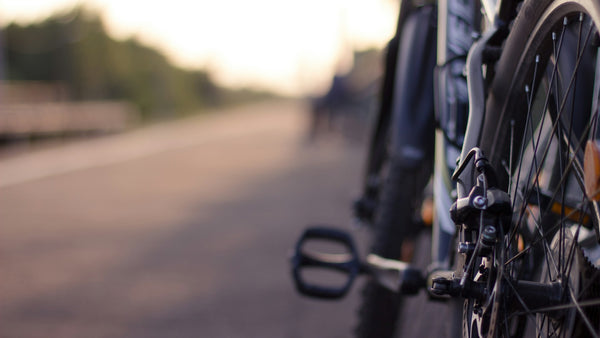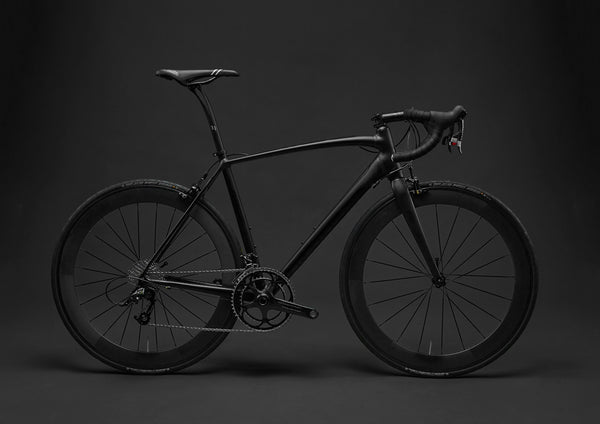Unfortunately, advocating for cycling safety can be a fraught subject. In the middle of the tug-of-war between the drivers of heavy, motorized vehicles and pedestrians/cyclists, tempers flare and fingers are pointed whenever there is any sort of accident. Suggesting that cyclists must take exceptional safety precautions is called out as victim-blaming while car drivers motor along with little awareness of the dangers that they present to fellow road users.
Cycling safely in public includes an inherent level of danger since we have only so much control over our environment. However, that is not only true for cycling, but also walking, jogging, skiing, and even driving. There can always be extenuating circumstances that place us in an extra level of danger. That doesn’t mean there aren’t ways to stay as safe as possible, even while using public roads for our cycling. We have a few cycling safety tips that will hopefully help you finish every ride with a smile on your face.
Preventive measures to avoid accidents
Distinguishing between preventive measures and protective measures, preventive measures are actions you can take to avoid accidents entirely. Though perhaps not a complete guide to public safety cycling, these cycling safety tips will help guide you away from those situations that put you in the greatest level of danger.
- Avoid busy roads: If you live in a heavily populated region or in the center of a large city, it can be difficult to find quiet road alternatives. But staying off the heavily trafficked roads where drivers will not expect to see cyclists, or even worse, resent your presence there, will add not only to the safety but pleasure of your ride. Look for quiet side streets to navigate through town and then find quiet country roads, preferably with wide shoulders, to do your road riding.
The avoidance of busy roads is certainly one of the biggest reasons gravel bikes and gravel riding has become so popular. The country is crisscrossed with lightly used gravel roads that help get the rider off the streets and into the quiet countryside. We certainly encourage you to look into these types of cycling routes as well.
But be aware that you will want to have the bike maintenance skills to get yourself out of any mechanical trouble if you are on a gravel road in the middle of nowhere. And make sure if you intend to ride deeper into an unknown route that a friend or family member knows roughly where you are going in case you should have a mishap along the way.
- Make sure your bike is in working order: Your bike should fit you properly; it should not be too big or too small so that you can maneuver it with ease. Also, check to make sure your brakes are in perfect working order and that the brake pads are not overly worn. If you are riding a rim brake bike, make sure the brake pads are properly adjusted so that they are pressing precisely on the rim’s brake track.
For disc brake users, ensuring the brakes are not rubbing and that the brake fluid (for hydraulic disc brakes) has been changed on a regular schedule (about once a season if you ride a lot), will ensure that you’ll never be in doubt of your stopping ability.
Similarly, make regular checks of important places like the headset, pedals, and wheels to be certain that they are all bolted and screwed on properly. Keeping the chain and drivetrain clean and oiled will also help you feel secure in the efficiency of your bike and will help the bike and all its parts last longer.
- Ride defensively: Assume the drivers don’t see you and will make stupid decisions even if they do. Stay alert always and aware of your surroundings. Having your ears and eyes open can do a lot to help you avoid dangerous situations, either by hearing traffic coming up behind you or being aware of cross traffic that could turn abruptly in front of you.
Remember you are likely riding faster than drivers expect, so that even if they do see you coming, they may think that they can pull out in front of you. Anticipating stupid driver’s moves like that can help you get through the ride safely.
- Use daylight bike lights: Riding with bike lights might not look super pro, but having a front and rear light will not only help drivers see you, the lights will alert pedestrians to your presence, and hopefully prevent any altercations at crosswalks and stop lights. It’s especially important to use lights on your bike during the months with fewer hours of daylight and gloomy weather.
- Consider wearing hi-viz clothing: This is perhaps the least helpful suggestion since there is all sorts of evidence to indicate highly visible clothing has little or no effect on how well drivers see cyclists. And hi-viz clothing provides little to no help once it gets darker.
Some manufacturers make clothing using a highly reflective material that bounces artificial light emitted by headlights back to the drivers. Wearing a product like that may be beneficial especially if you frequently find yourself riding during times of low-level lighting, like early in the morning, late in the evening, or during particularly gloomy, cloudy weather.
If you want to take every precaution possible to improve the chances that a driver will see you while you are riding on the road, then wearing hi-viz or reflective cycling clothing can certainly be added to the list. But we would caution you not to become too complacent and assume that since you are wearing some seriously bright piece of clothing that you are definitely visible. Alas, that does not seem to be always the case.
Mitigating measures in the event of a crash
Sometimes crashing is unavoidable. It is sometimes part of being a cyclist. There are measures you can take to reduce the chance of serious injury on those occasions when the rubber doesn’t succeed in staying on the ground.
- Don’t ride too fast for the conditions: If you are riding in wet or slippery conditions, or you are riding in heavy traffic where cars are coming from all sides, it is best to hold your speed down to a level that will allow you to react and even stop quickly. Slippery or icy conditions will require even greater care since you will want to be certain you do not slide out or have difficulty stopping.
- Wear a helmet: Many cycling advocates argue against helmets. It’s true that if you get hit at speed by a car, a helmet will not be enough to protect you from injury. But that would be like arguing that a police officer or soldier shouldn’t wear a bulletproof vest because it only protects a small part of the body under specific situations.
There are many possible scenarios that do not involve anyone but yourself where you could find yourself crashing. It is very easy to slam your head into the ground on a simple slide out when turning too rapidly on sand or ice. Or if you are taking your bike over some rocky gravel and hit a bump too hard, you could be sent off the bike and land heavily on your head. In these and many other scenarios, you will be much better off wearing a properly fitting and well maintained helmet.
That helmets have become tools either to blame the culpability of cyclists or as a flashpoint for cycling advocates insisting on reducing the number of barriers to starting cycling, we know many cyclists, including ourselves, whose helmets have saved us from severe head injuries on more than one occasion.
- Work on your bike handling skills: Being able to handle your bike well can help you avoid accidents, especially in situations where cars or indeed other cyclists drive or ride stupidly around you. Being able to react quickly and remain in control of your bike could be the best way to avoid crashing.
And don’t underestimate how important it can be to crash well. That is to say, learn how to remain supple and even roll off the bike as you fall. When the body gets rigid and you instinctively put out an arm when you are crashing, that’s when you start breaking bones like wrists, forearms, and collarbones. Admittedly, that is easier said than done. But it is something you can practice if you have a simple bike and a soft patch of grass, you can test and practice your ability to crash gracefully. It could help the motion be more instinctive when you are faced with a real crash situation.
- Obey traffic laws: Whether rightly or wrongly, this is always a point where cyclists get a lot of criticism from other road users. It’s fairly well established that cyclists don’t break the traffic laws any more than cars, but that doesn’t stop people from categorizing us as rule-breakers en masse. In most cases, it is safer to follow the letter of the law. So do not ride counter traffic, do not go the wrong way down one-way streets, do not breeze through stop lights.
We understand, though, that there are certain situations where a little rule bending might actually put you in less danger. For instance, when at a stop light, it can be better to anticipate the green light by several seconds to give you the chance to get up to speed before the cars start trying to squeeze past you. This is a mild level of law-breaking in the interest of self-preservation. Just keep in mind, if you do engage in this type of riding, you will inevitably piss off some irritable driver, who may berate you for it, which could put you in even greater danger. So proceed with caution.
Safety cycling - Conclusion
It is one of the less attractive aspects of cycling that we have to be the smartest ones on the road all the time. Any lapse in concentration could end the ride very badly for us. Listing these preventive and protective measures to increase your cycling safety will hopefully not feel too weighty and ruin the pure pleasure of being on two wheels on the open road. The ultimate goal is to have fun and stay safe!
Be sure to also check our article on how to choose the right bike for your riding style!



































































































































































































































































